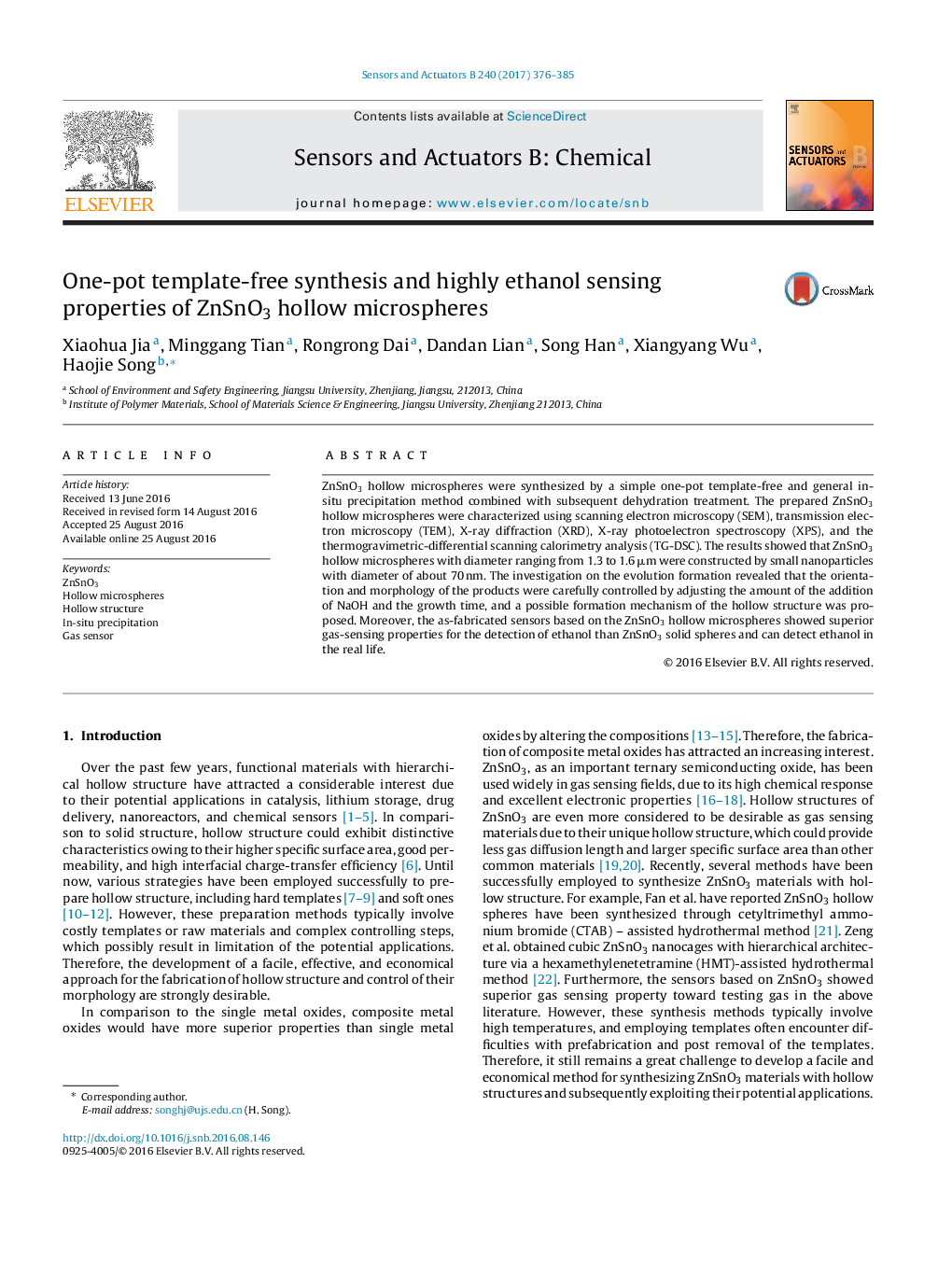| Article ID | Journal | Published Year | Pages | File Type |
|---|---|---|---|---|
| 5009587 | Sensors and Actuators B: Chemical | 2017 | 10 Pages |
â¢ZnSnO3 hollow microspheres were synthesized by a simple one-pot template-free and general in-situ precipitation method.â¢The orientation and morphology of the ZnSnO3 hollow microspheres could be carefully controlled by adjusting the amount of the addition of NaOH and the growth time.â¢A ZnSnO3 hollow microspheres based gas sensor exhibited good sensitivity and selectivity for the detection of ethanol.
ZnSnO3 hollow microspheres were synthesized by a simple one-pot template-free and general in-situ precipitation method combined with subsequent dehydration treatment. The prepared ZnSnO3 hollow microspheres were characterized using scanning electron microscopy (SEM), transmission electron microscopy (TEM), X-ray diffraction (XRD), X-ray photoelectron spectroscopy (XPS), and the thermogravimetric-differential scanning calorimetry analysis (TG-DSC). The results showed that ZnSnO3 hollow microspheres with diameter ranging from 1.3 to 1.6 μm were constructed by small nanoparticles with diameter of about 70 nm. The investigation on the evolution formation revealed that the orientation and morphology of the products were carefully controlled by adjusting the amount of the addition of NaOH and the growth time, and a possible formation mechanism of the hollow structure was proposed. Moreover, the as-fabricated sensors based on the ZnSnO3 hollow microspheres showed superior gas-sensing properties for the detection of ethanol than ZnSnO3 solid spheres and can detect ethanol in the real life.
